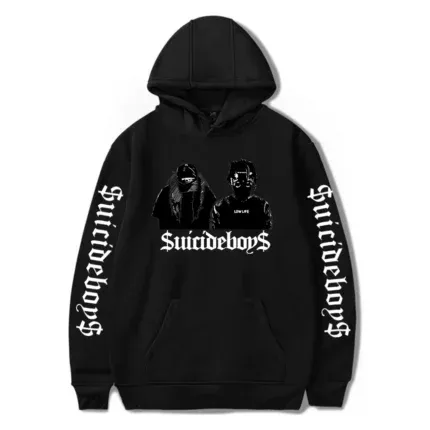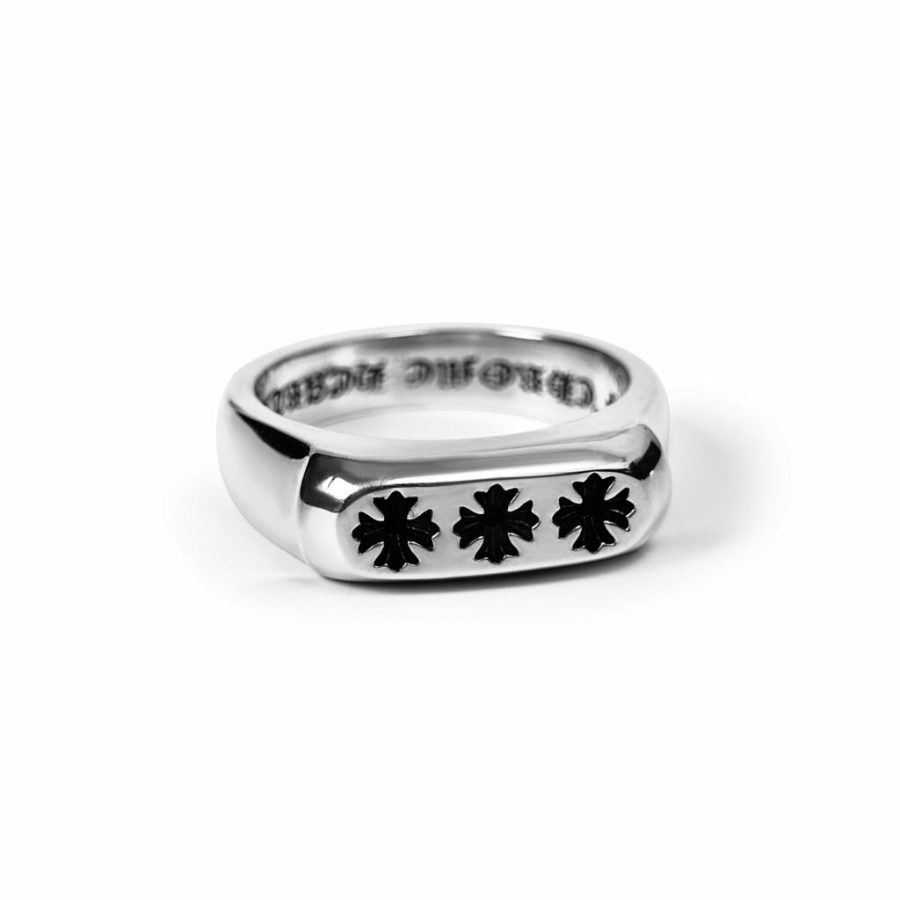Suicideboys (stylized as $uicideboy$), a duo consisting of cousins Ruby da Cherry (Aristos Petrou) and Scrim (Scott Arceneaux Jr.), have garnered a massive following since their formation in 2014. Known for their raw, gritty lyrics that touch on topics like depression, addiction, and self-destruction, the group’s music resonates with listeners who find solace in their unfiltered expression. Alongside their music, Suicideboys have created a unique brand that extends beyond sound—into the world of fashion. Over the years, their merchandise has evolved from simple streetwear staples to high-end, stylish pieces. This essay explores the progression of Suicideboys merch, charting its journey from underground streetwear to a chic, widely sought-after fashion brand.
The Origins of Suicideboys Merch: Rooted in Streetwear
In the beginning, Suicideboys merch was heavily influenced by streetwear culture. Streetwear, a style rooted in skate, surf, and hip-hop culture, relies on graphic-heavy T-shirts, hoodies, and hats, offering casual, oversized, and comfortable clothing with bold, often rebellious messaging. The early days of suicideboys merch were no different. Their initial offerings included hoodies, T-shirts, and hats emblazoned with their name, logo, and grim designs, often drawing inspiration from dark themes like skulls, occult symbols, and nihilistic phrases—a reflection of their music and ethos.
The appeal of their early merch lay in its authenticity. Fans connected with the duo’s aesthetic, which mirrored the underground subcultures they represented. In many ways, this was an extension of the Suicideboys’ ethos—an underground, DIY approach to life and music. The designs were unpolished but powerful, combining heavy metal iconography with streetwear sensibilities. Their merchandise resonated with their core fanbase, a largely young audience seeking to express themselves through unconventional, non-mainstream clothing. By adopting dark, brooding imagery in line with their lyrical content, Suicideboys created an instantly recognizable visual identity that became synonymous with their brand.
In these early days, the emphasis was on accessibility. Suicideboys merch was affordable and approachable, aligning with the streetwear mantra that fashion should be by the people, for the people. T-shirts, hoodies, and caps were sold in limited drops, making them both desirable and affordable for their fans, while maintaining a sense of exclusivity and community.
Growing Popularity: From Cult Following to Mainstream Recognition
As Suicideboys’ music began to gain traction, their merchandise also became more widely recognized. Their collaboration with G*59 Records, their own label, helped shape their merchandise line, as it further solidified the connection between their music and their clothing. The duo’s fanbase expanded rapidly thanks to streaming platforms like SoundCloud and YouTube, where their music reached millions of listeners worldwide. This newfound popularity placed the group in the spotlight, and their merch naturally followed suit.
During this period, Suicideboys’ merch began to see a broader reach, especially with limited-edition drops that sold out quickly, creating a sense of urgency among fans. Their collaborations with other underground artists, streetwear brands, and tattoo-style designers added a layer of uniqueness to their apparel. Designs became more intricate, with a greater emphasis on artistic representation, while still maintaining their gritty, nihilistic edge. Their pieces often featured highly detailed and symbolic artwork, including inverted crosses, distorted figures, and monochromatic color schemes, which aligned with the horrorcore and punk influences in their music.
The merchandising strategy mirrored the trajectory of other successful artists who used clothing to create a deeper connection with fans. As their influence grew, Suicideboys merch started to evolve from simple band merchandise into a coveted item within the broader streetwear community. Fans didn’t just buy their clothing to support the music; they began to wear it as a badge of honor, a way to express their own affiliation with the Suicideboys’ dark, introspective world.
The Shift: Streetwear Meets High Fashion
In recent years, the fashion landscape has experienced a notable shift, with streetwear crossing over into the world of high fashion. Suicideboys were quick to adapt to this trend, evolving their merchandise to reflect this blending of styles. As their brand grew, the aesthetic of their merch transformed from raw, underground streetwear to more polished and chic offerings. This transition mirrored the path of streetwear brands like Supreme and Off-White, which moved from niche subcultures to becoming mainstays in luxury fashion.
One of the key aspects of this evolution has been the attention to quality and detail in the merchandise itself. Suicideboys began experimenting with higher-end fabrics, improved printing techniques, and more sophisticated designs. While still rooted in the aesthetic that made them famous—dark, moody imagery and symbolism—their merch began to appeal to a broader audience that appreciates streetwear for its cultural cachet, not just its association with underground movements. Limited-edition pieces, such as heavyweight hoodies, embroidered designs, and high-quality hats, signaled that the Suicideboys were moving beyond basic, mass-produced merch into the realm of fashion-forward, collectible pieces.
The Suicideboys’ growth also coincided with an increased willingness from fans and fashion enthusiasts to pay premium prices for exclusive drops. While their earlier offerings were about accessibility and affordability, newer collections often featured higher price points, which didn’t deter their growing fanbase. In fact, it only heightened the sense of exclusivity and desirability, tapping into the same demand-driving principles used by luxury streetwear brands. Their ability to maintain a limited supply of high-quality products, while fostering demand through timed drops and exclusive collaborations, played a major role in this shift.
Collaborations and The Expansion of Chic
One of the defining moments of Suicideboys’ transition from streetwear to chic fashion was their strategic collaborations. In fashion, collaborations serve as a bridge between different worlds, often creating buzz and new opportunities for artists and designers to explore. Suicideboys have worked with underground designers and artists whose aesthetics align with the group’s dark, subversive vibe. These collaborations have allowed them to experiment with bolder, more artistic designs, expanding the creative possibilities for their merchandise.
Moreover, the duo’s influence on fashion has extended beyond their own merch. Celebrities and influencers within the alternative and streetwear scenes have been spotted wearing Suicideboys gear, adding a layer of cultural validation to their brand. This kind of exposure has helped position their clothing as not just band merchandise, but as part of a larger movement where streetwear intersects with music, art, and cultural commentary.
Suicideboys’ collaborations with tattoo artists and visual designers who specialize in Gothic and punk aesthetics have been particularly impactful. These partnerships have led to collections that are visually striking, often resembling wearable art rather than simple band tees. By moving towards more art-focused and expressive designs, Suicideboys have been able to maintain the edgy, underground vibe of their earlier work while embracing the trend towards high fashion streetwear.
The Future of Suicideboys Merch: Sustaining the Balance
The $uicideboy$ merch have successfully navigated the evolution from streetwear to chic without losing the authenticity that made them popular in the first place. As their music continues to attract new fans, their merch will likely continue to evolve in step with the broader fashion world. Their ability to balance accessibility with exclusivity, and to blend the lines between underground and mainstream fashion, positions them as a unique entity in the merch game.
Looking forward, the duo is likely to continue experimenting with new designs, materials, and collaborations. They have already demonstrated that they are not bound by traditional notions of what band merchandise should be, and they will likely keep pushing the envelope in the fashion world. What started as simple, gritty streetwear is now part of a larger, chic fashion movement. The Suicideboys have shown that their brand transcends music, creating a fashion identity that resonates with fans and fashion enthusiasts alike.
In conclusion, the evolution of Suicideboys merch from streetwear to chic is a testament to their ability to adapt, innovate, and stay true to their roots while embracing the future of fashion. Their merchandise has grown from humble beginnings into a symbol of cultural and musical expression, appealing to both the hardcore fan and the fashion-forward consumer. Through collaborations, limited drops, and an ever-evolving aesthetic, Suicideboys have cemented their place in the world of chic streetwear, proving that band merch can be as much a part of the fashion conversation as it is about supporting the music.




